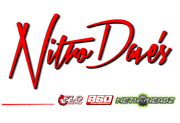
We get asked a lot of questions about nitrous every day. One of the most asked questions is whether someone can run a dry system on their stock vehicle. Most of the time, the answer is no and that they need to run a wet system. So let's go over the reasoning behind this and why you should run one or the other on your particular combo.
WET vs. DRY
A wet system typically contains a Y-shaped nozzle or throttle body plate with two jet fittings, one for nitrous and one for fuel. It comes with two solenoids (Nitrous and fuel), a fuel rail adapter, bottle, main feed line, and the lines that connect the fuel rail adapter, solenoids, and nozzle/plate. A dry system will contain either a straight nozzle with one fitting or a throttle body plate with a single jet fitting. It can also include two jet fittings with the fuel side capped off. It will also have the nitrous solenoid, main feed line and bottle, and line from the solenoid to the nozzle/plate. Of course, there are also wet and dry versions of direct port systems, pucks, and spray bars.
EXTRA FUEL
When you spray nitrous, you have to add more fuel to burn the extra oxygen in your cylinder, making more power. Without the additional fuel, you will experience a dangerous lean condition or not pick up any power. Wet systems add this extra fuel through the fuel solenoid and onto the nozzle, where the fuel and nitrous meet and the fuel molecules are blown apart by the nitrous, atomizing the fuel. The fuel is typically supplied, in order from least to best, by a fuel rail adapter, second fuel regulator off of the main fuel line, or through a dedicated fuel system. If supplied by a fuel adapter, you should be conscious that you will have a short, lean spike when the nitrous system activates and should not spray more than a 150 shot in this configuration. Installing a second regulator on your main fuel feed is a better way to supply fuel for your nitrous system but can be limited by fuel supply and fuel octane. A dedicated fuel system is the best way to go, especially for a street/strip combo. You won't have to worry about pressure drops, fuel supply, or octane requirements, as you can run higher octane fuel in the standalone for larger shots and still run pump gas on the engine side. You can also adjust the fuel pressure to make minor adjustments to the tune-up without swapping jets around.
WHY IT'S DRY
Dry systems don't add the enrichment fuel through the nitrous system and must have the fuel added through the injectors. For this reason, it is not advisable to run a dry system on a carbureted or factory ECM combo. Instead, you should only run a dry system with an aftermarket ECM with provisions for nitrous enrichment. Doing so allows for more control over your fuel and requires fewer complex parts, increasing reliability. However, you will have to ensure you have the appropriately sized injectors to flow the additional fuel. You will also need to run higher octane fuel on both the engine and nitrous system since both the fuel required by the engine, and the nitrous enrichment fuel will come from the same source. Some older systems can spray the airbox and through the mass airflow sensor, with the stock ECM compensating with more fuel as it sees the extra oxygen via the MAF. However, these systems can be inconsistent and more trouble than they are worth, as the MAF may not add the correct amount of fuel or see the same amount of oxygen each time. That doesn't even begin to describe issues that would be caused on a factory calibration by the intake air temperature sensor receiving an icy blast.
CONCLUSION
Wet systems work best for the majority of people looking to spray on their carbureted, stock ECM, or factory stock vehicles. These kits provide the nitrous and fuel required to make more power. Dry systems are best for aftermarket ECM vehicles and provide a more straightforward kit with far more control over the fueling.
